Archive | Blog RSS feed for this section
Economics, Regional cooperation and integration
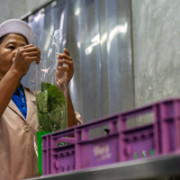 Economics
Economics
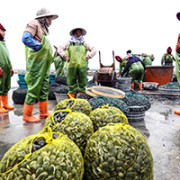 Industry and trade, Regional cooperation and integration
Industry and trade, Regional cooperation and integration
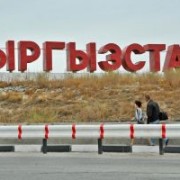 Education
Education
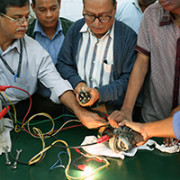 Infrastructure
Infrastructure
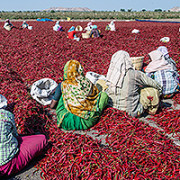 Infrastructure, Social development and protection
Infrastructure, Social development and protection
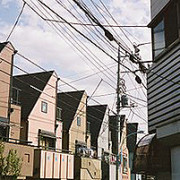 Health
Health
 Environment
Environment
 Agriculture and natural resources
Agriculture and natural resources
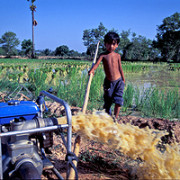 Industry and trade
Industry and trade

Learning from firms in East Asian production networks

Slowing growth in the Peoples Republic of China (PRC) – the world’s second largest economy – is grabbing the headlines with some suggesting a third wave of the 2008 global financial crisis. While this topic deserves attention because of its global economic implications, there is insufficient analysis of firms in global production networks (GPNs), which were at the forefront of the economic transformation in PRC and the rest of East Asia, and lessons for latecomers to GPNs.
The PRC’s growth prospects

The PRC’s diminished growth prospects have figured prominently in recent commentaries about global economic conditions and world stock markets (e.g. Frankel 2016). The general view, with which I concur, is that the PRC will grow in the future at a much slower rate than it has in recent decades. This growth slowdown will reduce international trade and has probably contributed already to the depression in oil prices (Blanchard 2016).
A snapshot of e-commerce in Central Asia

In 2015, Central Asia made some important improvements in the environment for cross-border e-commerce: Kazakhstan's accession to the World Trade Organization (WTO) will boost commercial transparency, while the Kyrgyz Republic’s membership in the Eurasian Customs Union expands its consumer base. Why e-commerce? Two reasons. First, e-commerce reduces the cost of distance. Central Asia is the highest trade cost region in the world: vast distances from major markets make finding buyers challenging, shipping goods slow, and export prices high. Second, e-commerce can help pull in populations that are traditionally under-represented in export markets such as women, small businesses and rural entrepreneurs.
CET funding strategy for vulnerable workers

Research has demonstrated that in general, training has a positive impact on an individual’s labor market performance: wages grow faster after training, training has positive impact on employment security, and training increases the probability of re-employment after job loss. A recent adult skills survey released by the Organisation for Economic Co-operation and Development (OECD) in 2013 re-emphasized that adult learning or continuing education and training (CET) can play an important role in the development and maintenance of key information skills and the acquisition of other knowledge and skills that are necessary for keeping pace with the changing work environment.
South Asia could be linchpin for regional integration

As the world deals with the "new normal" of a slowing China, regional financial and economic integration is more important than ever, and South Asia is strategically poised to play an influential part. There are several reasons why it is time to take a fresh look at the potential bridging role of South Asian economies in Asian integration. First, the South Asian economies -- which comprise India, Pakistan, Bangladesh, Sri Lanka, Nepal, the Maldives, Afghanistan and Bhutan -- have a largely untapped market of about 1.7 billion people, and they belong to the South Asian Free Trade Area.
On the unintended consequences of housing policies: A cautionary tale of three developed countries

Lack of affordable housing is a serious policy concern in many countries. In large prosperous cities such as London, New York, Beijing, or Tokyo, the affordability crisis is particularly acute. In these cities, households often live in excessively expensive and crammed spaces. Homeownership remains an unachievable dream for many. Not surprisingly, voters in these places pressure politicians into implementing policies that tackle the crisis.
5 reasons to be worried about health security in Asia

If you live in Asia and the Pacific, do you ever wonder how high your risk is of contracting antimicrobial-resistant bacteria or emerging infectious diseases such as a new strain of avian influenza? Unfortunately, I have to tell you that the risk here is higher that in any other region in the world.
Realizing the Paris Agreement: How can Asia manage the transition to a low-carbon economy?

As the world celebrates the Paris agreement, after 20 years of fraught meetings, its significance for the future development pathways of the emerging economies of Asia cannot be underestimated. Critically, it will increase the flow of additional public and private finance for vulnerable countries for both low carbon and climate resilient investments. Low-carbon green growth pathways toward a possible 1.5°C limit and 5-year reviews will be played out through the Intended Nationally Determined Contributions (INDCs).
Reinvigorating agricultural productivity in the Lower Mekong

The green revolution has done wonders for Asia. Yields for most crops, particularly the region's main staple of rice, have doubled over recent decades. In the Lower Mekong Delta, considered to be Asia's rice bowl, the new technologies and crop strains that the green revolution brought were a big success.
What Africa can learn from Asian supply chains

At this week’s 10th World Trade Organization (WTO) Ministerial Conference in Nairobi, Kenya, trade ministers are trying to advance 15 years of Doha Development Agenda talks to reduce trade barriers. The real issue, however, is whether African economies can follow East Asia's success in global supply chains amid “new normal" growth and rising inequality.


Search
Subscribe / Connect to Asia Pathways
Subjects
- Agriculture and natural resources
- Blog
- Capacity development
- Climate change
- Economics
- Education
- Energy
- Environment
- Finance sector development
- Gender
- Governance and public sector management
- Health
- Industry and trade
- Information and Communications Technology
- Infrastructure
- Miscellaneous
- Population
- Poverty
- Private sector development
- Regional cooperation and integration
- Sanitation
- Social development and protection
- Transport
- Uncategorized
- Urban development
- Video Blog
- Water
Recent Posts
- Artificial intelligence: A new driver for inclusive growth and development?
- Increasing trust in cross-border e-commerce and artificial intelligence
- Enhancing access to maternal and newborn healthcare in developing Asia
- Can electric vehicles lead the way to a sustainable future?
- Mitigating climate-related sovereign risk to accelerate action on the climate emergency




Recent Comments